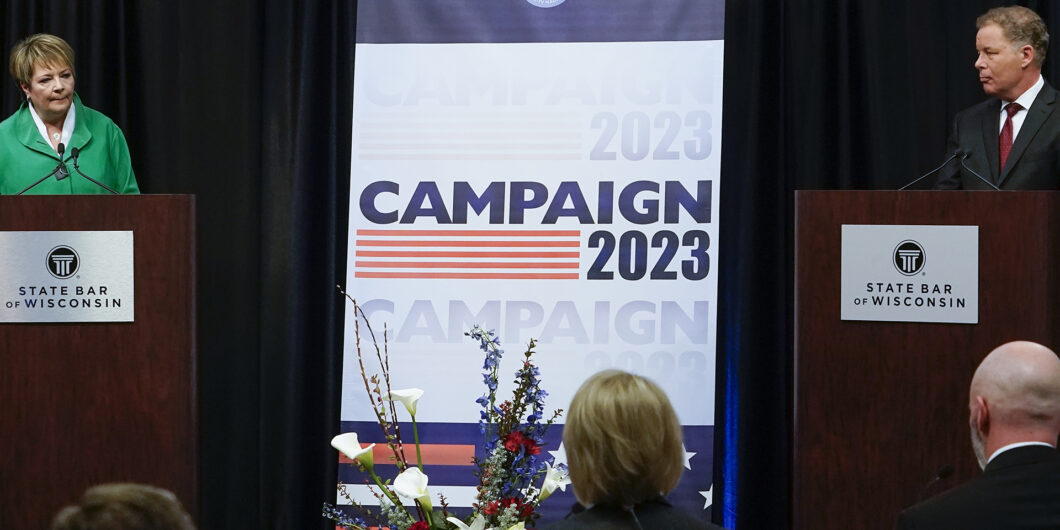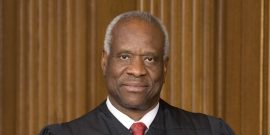A Plea Against State Court Activism
A recent New York Times headline was itself almost as instructive and revealing as the article that followed. “The Quiet Way Democrats Hope to Expand Their Power at the State Level” details a strategy adopted by the Democratic Governors Association to support the campaigns of Democratic gubernatorial candidates who will have the opportunity to appoint state court judges in the next term if they win. Democrats, the article claims, are “locked out of power on the Supreme Court and still playing catch-up against Republicans in the federal judiciary.” State courts represent, according to the article, a “quiet” vehicle for counterbalancing federal power.
Finally! It took a major revolution in American law for anyone to notice this. Dobbs v. Jackson Women’s Health Organization, the 2022 case that overturned Roe v. Wade, recentered the abortion debate in states where it should have been from the start. In the abortion debate, as well as most others involving civil rights, the left and the right tend to accuse the other of pursuing political ends through the courts by encouraging judicial activism. But we may have a window of time when that can be corrected. Responsible state and federal litigation strategies could return constitutional interpretation and the balance of power back to the Founders’ ideal.
Our federal system never envisioned a Supreme Court (or centralized federal government) with such a long, dark shadow that touches almost every aspect of public and private life. The states are sovereign and came together to create the federal government for limited purposes that were of common concern to all states—functions of government that no one state could execute alone, or ones necessary for the newly constituted nation but that would likely be neglected do to what we now call the “tragedy of the commons.” The federal government was designed to have limited powers with states themselves even influencing this limited power directly through the original scheme of the selection of senators. Many of the Constitution’s provisions—“Congress shall make no law”—are a direct bar on certain federal actions. And the Tenth Amendment itself makes clear in stark language that “any powers that are not specifically given to the federal government, nor withheld from the states, are reserved to those respective states, or to the people at large.”
The current Supreme Court has signaled an openness not just to a recovery of a truly federalist system through decisions like Dobbs, but also a return to an originalist approach to constitutional interpretation. This would almost certainly entail a resurgence of federalism and the recession of administrative power that has too often eclipsed the legislative power of the US Congress.
The 2022 term of the Supreme Court included several landmark shifts beyond the resurgence of federalism sparked by Dobbs. The Dobbs decision focused on the Fourteenth Amendment, and other 2022 decisions, Kennedy v. Bremerton School District and New York Pistol & Rifle Assn., Inc. v. Bruen, focused primarily on the First and Second Amendments respectively. While these are vastly different cases, they share one thing in common—they employ an interpretation of these varied constitutional provisions in a way that rejects a fluid constitutionalism and requires an appeal directly to the meaning of the text in the historical context in which it was written.
The dissents in these cases clarify the approach to constitutional hermeneutics now rejected by the Court. Justice Breyer’s dissent in Bruen begins, “In 2020, 45,222 Americans were killed by firearms.” The reality of this and the other statistics that he recounts are truly horrifying. But, as Justice Alito notes in a concurring opinion, “Much of the dissent seems designed to obscure the specific question that the Court has decided.” Is action needed to address these 45,222 deaths best taken by a court? This number is sobering, but it is irrelevant to what a court properly constrained to its constitutional role should consider in reaching a conclusion on the proper interpretation of the law. Courts were not designed to set policy and doing so oversteps the boundaries of their constitutional role.
Bruen and Kennedy re-enforced and resurrected tests that appeal to the text of the Constitution and the history and tradition of that text’s interpretation. Appeals to sociology, psychology, or political realities should carry no weight in America’s courtrooms—on the federal or state levels. Courts cannot and should not go on interdisciplinary expeditions in search of policy solutions to very real and pressing problems. The current Supreme Court has shown no willingness to do so even in the most controversial cases like Dobbs, but also Students for Fair Admissions v. Harvard, which struck down race-based affirmative action in college admissions. In none of these cases have the justices suggested that there are no real social problems underlying the litigation, but they have insisted that the approach of previous courts has overstepped the boundaries of judicial authority. Activist attorneys shopping for activist judges willing to engage in outcome-driven legal analysis have little recourse in such a system.
It is disturbing to read that either party has specific designs on politicizing our state courts.
And this decided shift is what leaves state courts vulnerable to activism. It may be that in some jurisdictions, the US Supreme Court’s constitutional jurisprudence may shape the interpretation of state constitutions, but it should not given a state court’s authority to interpret its state’s constitution and laws. The prevalence of the “lockstep doctrine” in many states requires state judges to interpret state constitutions “in lockstep” with the US Supreme Court’s interpretation of the US Constitution. This has the practical effect of making state courts adjuncts of federal courts and renders state constitutions irrelevant. State supreme courts are supposed to be the final judicial authority regarding state constitutions, but lockstep provisions put that judicial authority in constant peril along with the rights associated with state constitutional provisions.
In our federal system, federal law that applies to all states serves as a floor for the rights of citizens. States are free to provide more protections, but not less. Pre-Dobbs, for example, states were allowed to regulate abortion but not completely bar it. States can provide more robust free exercise rights, greater protections to criminal defendants, or completely eliminate capital punishment. While limited to the jurisdiction of a particular state, state constitutional and statutory law is a very viable pathway to changing the contours of our nation’s civil rights landscape.
It is disturbing to read that either party has specific designs on politicizing our state courts. The task of constitutional interpretation at the state level is a somewhat complex enterprise. First, by nature, state constitutions are usually broader and more detailed than the US Constitution. This is understandable because the powers reserved to the states are also quite broad. Second, they also tend to be amended more easily and frequently, so analogous history and tradition tests are as numerous as amendments.
What does remain that is parallel in the federal system are settled legal principles that should not and cannot be ignored. Apart from some aspects of Louisiana state law, all federal and state law in the US operates in a common law context that descends from the English common law that this nation inherited as colonial territory of England. This is not “judge made law,” contrary to popular misconception. The common law consists of principles drawn from immemorial custom that themselves contain the legal solutions to very real problems that have been around for a very long time.
Our system of justice and, by extension, much of our shared life together owes its existence to these enduring principles that were dismissed and rejected in very recent jurisprudence. Once we start to pull on loose strands, we should not be surprised to see the tapestry begin to disintegrate. The politicization of our federal and state courts provides a perfect venue for judges to begin doing exactly that by forgoing their proper role and adopting the role of legislature or policymaker, not to mention foreclosing the possibility that there is simply no governmental solution to some problems. Maybe some solutions can only be crafted by citizens working through the mediating institutions of civil society.
Suffice it to say, our system depends on independent state and federal courts both of which are beholden to the law and cognizant of their unique place in the separation of powers not only between branches of government, but between the states and the federal government. Hopefully, this unique moment will not be lost before a textualist and originalist constitutional approach becomes the norm and state courts resist the pressure to become a refuge for activism regardless of the advocate.


